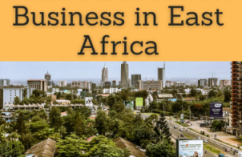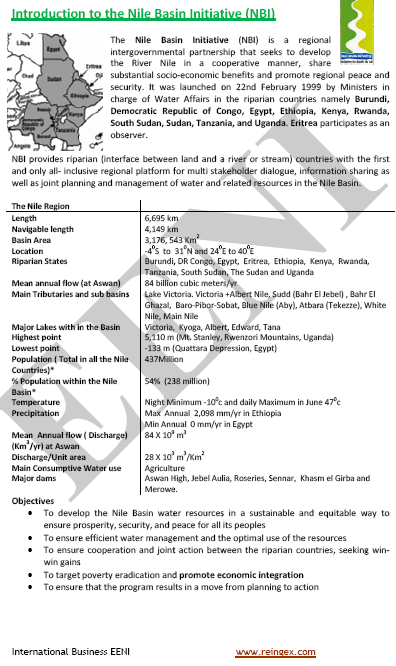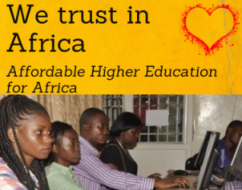Nile Basin Initiative, Tanzania, East Africa

Egypt, Ethiopia, Kenya, Rwanda, Sudan (Nile Basin Initiative)
- Introduction to the Nile Basin Initiative (NBI) - East Africa-
- Structure of the Nile Basin Initiative (NBI)
- Strategic Plans and Projects
- Economic Profile of the Nile Basin
- Benefits for Burundi, the DR Congo, Egypt, Ethiopia, Kenya, Rwanda, South Sudan, Sudan, Tanzania, and Uganda
The objectives of the subject “Nile Basin Initiative” are the following:
- To understand the objectives and the areas of cooperation of the Nile Basin Initiative
- To evaluate the benefits for the members of the Nile Basin Initiative
- To know the Economic Profile of the Nile Basin

The Subject “Nile Basin Initiative (NBI)” belongs to the following Online Programs taught by EENI Global Business School:
Doctorate in African Business, World Trade.
Master in Business in Africa, International Business.
Courses: Business in East Africa, Central Africa.


Languages:  or
or  Initiative du bassin du Nil
Initiative du bassin du Nil  Iniciativa de la Cuenca del Nilo
Iniciativa de la Cuenca del Nilo  Bacia do Nilo.
Bacia do Nilo.
Masters adapted to countries of the Nile Basin Initiative:  Egypt,
Egypt,
 Ethiopia,
Ethiopia,
 Kenya,
Kenya,
 Rwanda,
Rwanda,
 Sudan,
Sudan,
 Tanzania, and
Tanzania, and  Uganda.
Uganda.

In 1999 was created the Nile Basin Initiative (NBI) with the aim of encouraging the regional economic integration, the fair use of the common water resources and security and peace promotion in the Nile Basin region
Sample - Nile Basin Initiative

- This African organization consists of Burundi, the DR Congo, Egypt, Ethiopia, Kenya, Rwanda, South Sudan, Sudan, Tanzania, and Uganda
- Eritrea is an observer country of the Nile Basin Initiative
- The Nile Council of Ministers is the highest body of the Nile Basin Initiative
Nile Basin region:
- Eleven countries: Burundi, the DR Congo, Egypt, Ethiopia, Kenya, Rwanda, South Sudan, Sudan, Tanzania, and Uganda
- Population of the Nile Basin Initiative: 437 millions (total population). 50% lives within the Nile Basin
- Nile Length: 6,695 kilometers
- Navigable: 4,149 kilometers
- Lakes in the Nile Basin region: Victoria, Kyoga, Albert, Edward, and Tana
- Nile: one of the least developed rivers in the World
- Opportunities in the Nile Basin Initiative region: common water resources, hydro-power, agriculture, fisheries, and navigation
Access to the Asia-Africa Growth Corridor.
The Nile Basin Initiative belongs to the African Civilization.

(c) EENI Global Business School (1995-2024)
We do not use cookies
Top of this page



